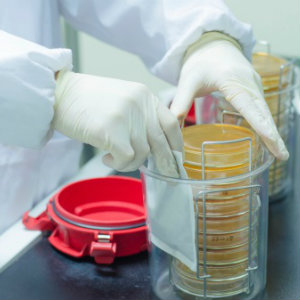blog
October 2, 2014 | Source: Rapid Micro Biosystems, Inc.
Choosing an Automated RMM Technology, Part 2: Critical Details
POSTED BY Rapid Micro Biosystems | 6 minute read
October 2, 2014 | Source: Rapid Micro Biosystems, Inc.
POSTED BY Rapid Micro Biosystems | 6 minute read
 There are many considerations to make in choosing an automated rapid microbiological method (RMM), and the decision can seem daunting. However, asking the right questions can narrow your choices and provide confidence and peace of mind as you make your decision.
There are many considerations to make in choosing an automated rapid microbiological method (RMM), and the decision can seem daunting. However, asking the right questions can narrow your choices and provide confidence and peace of mind as you make your decision.
In the first installment of this series, we discussed some of the initial questions any lab should consider as the microbiologists sift through the large number of technologies on the market. We also covered the utility of the decision matrix in further narrowing those choices, as well as some of the key considerations for the few systems that make the cut. This time around, we'll help you arrive at a conclusion by considering a few more critical details.
“Automation” takes on many meanings in the business world, but an automated RMM should significantly reduce the amount of interaction between the user and the equipment and samples. Ask yourself:
● How much time will you spend handling samples, and how does that compare to the amount of time you spend now?
● Does the equipment only automate the incubation process, or does it handle enumeration and reporting, as well? Will you still have to spend time manually counting colonies?
● Does the system's automation reduce common human errors that exist in your current method, such as keying errors of final results into a LIMS system?
● Does the system integrate with your LIMS or other record-keeping system? Does it allow stakeholders outside the QC lab to view data without interacting with you or members of your team?
Even if a given automated RMM seems like it will meet your lab's testing needs, you'll need to consider current and future training requirements. How many steps are involved in the use of the new method? How similar is sample preparation to the traditional test? Can current employees quickly learn to use it, or will it require complete re-training? Just as importantly, how much time and money will need to be spent training new hires to use the equipment? A RMM may provide a faster time to result, but could actually increase the number of steps in the process, not saving as much time as you first think.
It is important to clearly understand your existing test volumes and current resource requirements for each application. This information is critical to understanding if the new technology can support your throughput. Ideally, however, it will allow your lab to take on higher test volumes without proportional increases in labor.
RMM technologies vary wildly in size and technical requirements. Can your lab fit the equipment you want to install, and does the space you've allotted include all necessary electrical outlets, compressed air sockets and other technical necessities? Furthermore, will you have to place the system in your lab, or can it reside closer to the environments from which you'll be collecting samples?
Even if you're working with a team of seasoned industry veterans, you'll likely need vendor support as you install, validate and implement a new and complex piece of equipment into your workflows. You may also have to rely on that sole vendor for sample cassettes, reagents and other consumables. Ask whether the vendors whose products you're considering are reliable enough to provide a steady flow of technical support and consumables, ultimately allowing your lab to consistently run at maximum efficiency. Be sure to thoroughly review the vendor’s service offerings and current customers’ experience with the technology and vendor.
Ultimately, the decision matrix will lead to a cost benefit analysis that includes the cost of the system and ongoing cost of consumables. Understanding the resources impacts of each technology helps determine the true cost of the system over time.
An automated RMM can drastically improve your QC workflows, your lab’s resource efficiency and your company's ability to expand its testing volume – but only if you select the right system. To learn the specific benefits of growth-based, automated RMM, download our free guide today.